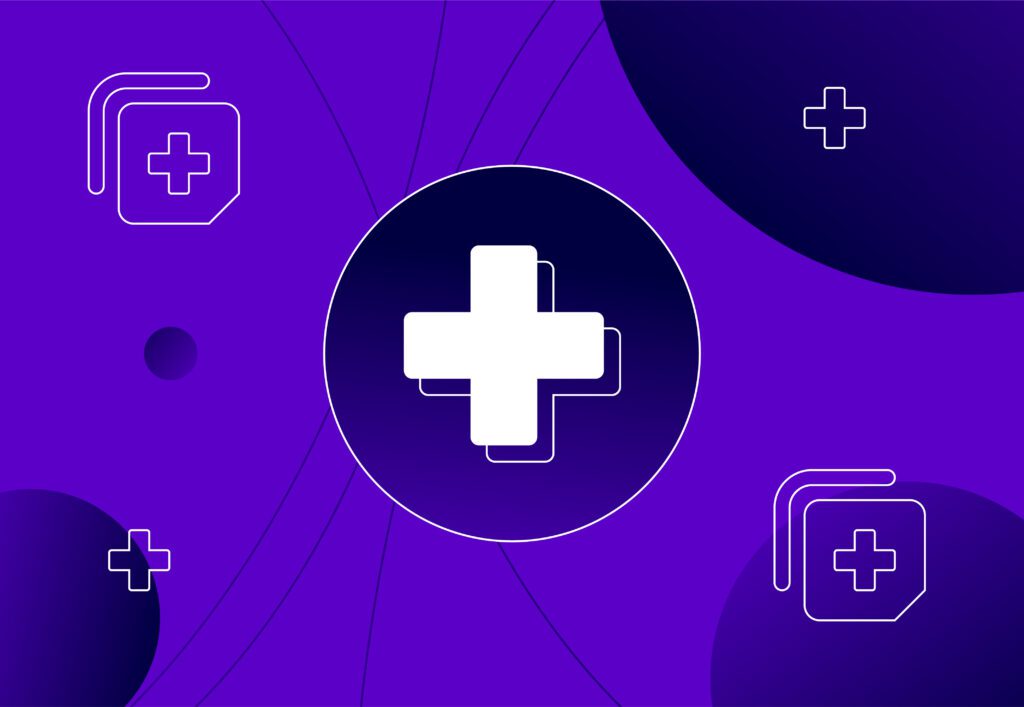
70 wellbeing and mental health statistics for 2024

We’ve rounded up one of the largest pools of up-to-date mental health statistics to help our readers gain some valuable insights into this vital subject. We hope that by shedding light on the state of mental health and wellbeing – both in the UK and globally – we can spread understanding and awareness on this important subject that affects so many people in different ways.
From gender to common mental health disorders, the mental health statistics below have been split down into several categories to make it easier to navigate and understand.
Affected by these statistics? Reach out for support
Faced with the facts which show the prevalence and seriousness of mental illness, it’s easy to feel emotionally overwhelmed. If reading these mental health statistics has affected you, or called to mind someone you know who you believe might be struggling, please reach out.
What support is available?
- NHS – Access NHS Mental Health Services
- CALM – The Campaign Against Living Miserably is an anti-suicide foundation with helpful content and a support line
- Samaritans – Talk to a Samaritan any hour of the day if you’re having suicidal thoughts
- 999 – If you find yourself in a mental health crisis and are in immediate danger, call 999 for an urgent response
- Reach out to friends and family
General statistics about mental health & wellbeing
- Bupa’s wellbeing index survey revealed that 24% of people in the UK (almost 1 in 4) characterise their mental health as being ‘poor’. (Bupa Health & Wellbeing Index – 2023)
- In 2019, 1 in every 8 people, or 970 million people around the world were living with a mental disorder, with anxiety and depressive disorders the most common. (Institute of Health Metrics and Evaluation – Global Health Data Exchange)
- Most Britons spend 90% of their day indoors. (Opinium)
- In one study in 2018, 74% of respondents reported feeling so stressed they have been overwhelmed or unable to cope during the last year. (Metalhealth.org – 2018)
Mental health statistics on anxiety
- An estimated 4% of the global population currently experience an anxiety disorder. (Global Health Data Exchange)
- In the UK during 2022-23, an average of 37.1% of women reported high anxiety. (ONS – 2023)
- In the UK during 2022-23, 29.9% of men reported high levels of anxiety. (ONS – 2023)
- In the UK during 2021-22, 22.5% of people reported high levels of anxiety (ONS – 2022)
- In 2008, 8.42% of women aged 18 to 24 years old were diagnosed or had symptoms of anxiety. By 2018, this had trebled to 30.33%. (British Journal of Psychiatry – 2021)
- 62% of people suffering from anxiety also have depression. (British Journal of Psychiatry – 2021)
- People who “often or always” felt lonely were almost five times more likely to report high anxiety than those who “never” feel lonely. (ONS – 2020)
- Although highly effective treatments for anxiety disorders exist, only about 1 in 4 people in need (27.6%) receive any treatment. (Alonso J, Liu Z, Evans-Lacko S, et al – 2018)
Mental health statistics on depression
- NHS Business Services Authority (BSA) figures indicate a rise in the number of individuals prescribed antidepressants in England, from 7.87 million in 2020/2021 to 8.32 million in 2021/2022. (NHS BHA – 2022)
- Antidepressant prescriptions have risen for 6 consecutive years, rising by 5.1% alone in 2021/2022 compared with the previous year. (NHS BHA – 2022)
- ‘Sandwich carers’ (aka. Carers who look after both their own children and a sick, disabled or elderly relative) are 26% more likely to suffer from depression. (ONS 2016)
Mental health statistics on PTSD
- 1 in 10 people in the UK are expected to experience PTSD at some point in their lives. (PTSDUK.org Stats)
- 4 in 100 people in the UK are expected to have PTSD at any given time. (PTSDUK.org Stats)
- Women aged 16-24 are most likely to screen positive for PTSD (12.6% of the population in this age range). (PTSDUK.org Stats)
- 1 in 13 children and young people in the UK will suffer from PTSD at some point during childhood. (The Lancet – 2019)
- It’s estimated there will be as many as 230,000 new PTSD referrals between 2020/21 and 2022/23 in England, which suggests a rise of about 77,000 cases a year on average. (Royal College of Psychiatrists)
Mental health statistics on the impact of COVID-19
- In England, the Centre for Mental Health predicted that up to 10 million people (almost a fifth of the population) needed mental health support as a direct consequence of COVID-19. (Centre for Mental Health – 2020)
- The COVID-19 pandemic contributed to a substantial rise in the prevalence of anxiety and depressive disorders globally. The number of individuals experiencing depressive symptoms worldwide increased by approximately 28%, growing from around 193 million to 246 million people. (The Lancet – 2021)
- Research reveals a significant spike in anxiety and depressive disorders in 2020 amid the COVID-19 pandemic with a staggering 26% rise in anxiety cases and 28% jump in major depression within just one year. (Geneva: World Health Organization – 2022)
- Between 20 and 30 March 2020, almost half (49.6%) of people reported high anxiety and average anxiety scores of 5.2 out of 10, a marked increase from 3 in the last quarter of 2019. (ONS – 2020)
- A study found that around 1 in 4 (27%) adults who reported difficulty in affording their rent or mortgage payments had moderate to severe depressive symptoms. (ONS – 2022)
- Adults living in the most deprived areas of England are 25% more likely to suffer from moderate to severe depressive symptoms. (ONS – 2022)
- Around 1 in 4 (24%) of those who reported difficulty paying their energy bills experienced moderate to severe depressive symptoms. (ONS – 2022)
- Those on housing benefit are more than twice as likely to have a common mental health problem than those not receiving it (35.1% vs 14.9%). (Commons Library: Poverty in the UK statistics)
- 79% of people are anxious about the cost of living. (Bupa Health & Wellbeing Index – 2023)
- People in the most economically deprived areas are 3.5 times more likely to be detained under the Mental Health Act than those in the least deprived. (NHS – 2024)
- More than 1 in 4 children aged 8 to 16 years (26.8%) with a probable mental disorder had a parent who could not afford for their child to take part in activities outside school. (NHS – 2023)
- 45% of respondents in one survey said that the cost of living and the associated financial squeeze are keeping them awake at night. (Aviva – 2023)
Mental health statistics about children
- Data showed a significant 40% increase in antidepressant prescriptions for children aged 5 to 12 years between 2015 and 2021. (Pharmaceutical Journal – 2022)
- Using the IQVIA Longitudinal Prescription Database, research shows that antidepressant dispensing to children, teenagers and young adults (ages 12-25) in the USA was rising before the COVID-19 outbreak and rose 63.5% faster in the year after. (American Academy of Paediatrics)
- In 2023, about 1 in 5 children and young people aged 8 to 25 years had a probable mental disorder. (NHS – 2023)
- This equates to 20.3% of 8 to 16 year olds, 23.3% of 17 to 19 year olds and 21.7% of 20 to 25 year olds. (NHS – 2023)
Mental health statistics on employment
- Mental ill health and musculoskeletal injuries are two of the top causes of both short-term and long-term absence (CIPD Health & Wellbeing Report – 2023)
- Around three-quarters of respondents (76%) report some stress-related absence with heavy workloads and management style most commonly to blame. (CIPD Health & Wellbeing Report – 2023)
- Over three-quarters (78%) of organisations are taking steps to identify and reduce stress. (CIPD Health & Wellbeing Report – 2023)
- Over half (53%) of organisations now have a stand-alone wellbeing strategy. (CIPD Health & Wellbeing Report – 2023)
- Over two-thirds of respondents (69%) report that senior leaders have employee wellbeing on their agenda. (CIPD Health & Wellbeing Report – 2023)
- More organisations now include provision for pregnancy loss compared with last year (37% ‘to a large or moderate extent’ compared with 26% in 2022). (CIPD Health & Wellbeing Report – 2023)
- The impact depression and anxiety has on the global economy can be measured in $1 trillion in lost productivity each year. (National Alliance on Mental Health – 2016)
- 53% of people would be more likely to choose an employer offering good health and wellbeing benefits. (Bupa Health & Wellbeing Index – 2022)
- For people reporting high anxiety during the pandemic, over 1 in 5 said that their work had been affected because they were finding working from home difficult. (ONS – 2020)
- Only 1 in 4 people disclose their anxiety disorder to their employer. (Made of Millions OCD Study)
- 38% are worried their boss will think it’s an excuse to get out of work. (Made of Millions OCD Study)
Mental health statistics about gender
- Suicide is the leading cause of death for men under 50 in England. (ONS Data – 2023)
- Males aged 50-54 were found to have the highest suicide rate at 23.1 suicides per 100,000 people in that age group. (ONS Data – 2023)
- Based on UK data over the last ten years, men are 3 times more likely to die by suicide than women. (ONS Data – 2023)
- In the US, 51.7% of women with a mental health condition in 2021 received support from mental health services, compared to only 40% of men. (Institute of Mental Health – 2021)
- For young people aged 17 to 25 years old, young women were twice as likely to have a mental health disorder. (NHS – 2023)
- In 2023, eating disorders were identified in 12.5% of 17 to 19-year-olds, with rates 4 times higher in young women (20.8%) than young men (5.1%). (NHS – 2023)
Mental health statistics about minority groups
- Black adults have the lowest mental health treatment rate of any ethnic group, at 6%, compared to 13% in the White British group. (NHS Survey – 2016)
- 75% of people aged 65+ have experienced significant anxiety or low mood at least once since turning 65, with 10% feeling this frequently or all the time (Seaman et al – 2020).
- Black people are 4 times more likely to be detained under the Mental Health Act 1983 than the majority white UK ethnic group. (NHS – 2022)
- Half of LGBT people (52%) said they’ve experienced depression in the last year.(Stonewall – 2018)
- 1 in 8 LGBT people aged 18-24 (13%) said they’ve attempted to take their own life in the last year. (Stonewall – 2018)
- 1 in 7 LGBT people (14%) have avoided medical treatment for fear of discrimination because they’re LGBT. (Stonewall – 2018)
- 3 in 5 LGBT people (61 per cent) said they’ve experienced anxiety in the last year. (Stonewall – 2018)
- 4 in 10 teenagers (40%) said images on social media had caused them to worry about body image. (Mental Health Foundation Report – 2019)
- 1 in 5 UK adults (20%) said images on social media had caused them to worry about their body image. (Body Image Report – 2019)
- A University of Pennsylvania study found that reducing social media use to 30 minutes a day resulted in a significant reduction in levels of anxiety, depression, loneliness, sleep problems, and FOMO. (University of Pennsylvania – 2018)
- 92% of parents think social media/the internet is having a negative impact on their children’s mental health. (Priory Group)
Statistics about coping strategies for mental health and wellbeing
- 70% of UK adults agreed being close to nature improves their mood. (Mental Health Foundation – 2021)
- 87% of people in one study found statistically significant positive associations between physical activity or exercise and mental health. (Move Your Mental Health Report – 2021)
- 49% said being close to nature helps them to cope with stress. (Mental Health Foundation – 2021)
- Studies show that there is approximately a 20% to 30% lower risk of depression and dementia for adults participating in daily physical activity. (https://www.mentalhealth.org.uk/)
- Participants of one study agreed yoga improved: energy (84.5%), happiness (86.5%), social relationships (67%), sleep (68.5%), and weight (57.3%). (National Library of Medicine)
- 49.9% of those finishing a course of NHS TTAD treatment (otherwise known as talking therapy) moved to recovery. (Commons Library – 2023)
Get in touch with Embryo today to learn more about our award-winning digital marketing services.
Deeper insights
- Find key strategies for wellness in the workspace
- Read our tips for physical and mental wellbeing
- Explore helpful educational content from the Mental Health Foundation


